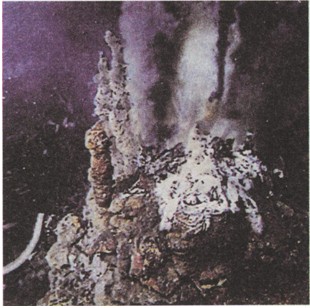人教高中英语高二下UNIT13-3
时间:2018-12-29 作者:英语课 分类:人教高中英语高二

LIFE IN THE OCEAN
The earth's oceans can reach depths of up to 11,000 metres. That is deep enough to cover Mt Qomolangma! The oceans are incredibly large and contain several different habitats. To make it easier to describe the various parts of the oceans, marine 1 scientists usually divide the oceans into five zones. Each zone is different mainly as a result of how much sunlight reaches it.
Most of the life in the ocean can be found in the first zone, which begins at the surface and goes down about 200 metres. Because there is sunlight at this level, plants are able to grow. Marine animals such as dolphins, sharks, sea turtles and sea lions, and of course a variety of fish, live in the sunlit part of the ocean. It is difficult to hide from other animals in this area, but many species 2 have adapted by becoming dark on the top and light on the bottom. This makes it difficult to see them against the dark water below and the blue sky above.
The second zone starts at 200 metres and goes down to about 1,000 metres. Some sunlight can reach this level, but it is not enough for plants to grow. Because this zone is relatively 3 dark, many of the creatures that live here are able to make light with their body: The light from these animals makes the water look like a sky with moving stars in it.
The third zone of the ocean is dark. This place, about 3,000 metres deep, may not seem a likely habitat, but there are more creatures here than one might think. Most of the animals that live here are black or red because of the lack of light. At this depth, a slow shower of what looks like snow is falling. This phenomenon, called "marine snow", is actually nutrients 4 falling towards the bottom of the ocean. It is an important source of food for the creatures that live in the deep.
Below 4,000 metres, the temperature is near freezing and there is no light at all. In fact, the zone is so dark and empty that scientists named this zone after the Greek word for "no bottom". There is not much life to be found in this cold and unpleasant part of the ocean, but some small creatures still manage to survive here despite the high water pressure. Few of the animals in the ocean can dive this deep. One exception 5 is the sperm 6 whale, which slows its heartbeat in order to reach this zone as it hunts for food.
The very deepest part of the ocean is found 2,000 metres further down. At this depth, the water pressure is extremely high and life is very difficult for the few creatures that live here. Compared to the other zones, this one has very little life. Since there is no light here, some of the animals do not have eyes. When scientists explored the very deepest parts of the ocean, they did not expect to find any life at all. However, it turned out that there are creatures that can live even in habitats as far down as 10,000 metres. They usually survive by living close to deep sea vents 7, "chimneys 8" that send out gases from within the earth. Unlike all other living things on the earth, which get their energy from the sun, the creatures that live here use chemicals from the vents to stay alive.
Next time you look at the ocean from the beach or on a map, remember that what you are seeing is only the surface -- only the beginning of the large and varied 9 adventure that is the ocean.

- Marine creatures are those which live in the sea. 海洋生物是生存在海里的生物。
- When the war broke out,he volunteered for the Marine Corps.战争爆发时,他自愿参加了海军陆战队。
- Are we the only thinking species in the whole of creation?我们是万物中惟一有思想的物种吗?
- This species of bird now exists only in Africa.这种鸟现在只存在于非洲。
- The rabbit is a relatively recent introduction in Australia.兔子是相对较新引入澳大利亚的物种。
- The operation was relatively painless.手术相对来说不痛。
- a lack of essential nutrients 基本营养的缺乏
- Nutrients are absorbed into the bloodstream. 营养素被吸收进血液。 来自《简明英汉词典》
- Everyone should keep discipline and you are no exception. 每个人都应该遵守纪律,你也毫无例外。
- There's an exception to every rule. 每项规则均有例外。
- Only one sperm fertilises an egg.只有一个精子使卵子受精。
- In human reproduction,one female egg is usually fertilized by one sperm.在人体生殖过程中,一个精子使一个卵子受精。
- He always vents his anger on the dog. 他总是拿狗出气。
- The Dandelion Patch is the least developed of the four active vents. “蒲公英区”在这四个活裂口中是发育最差的一个。